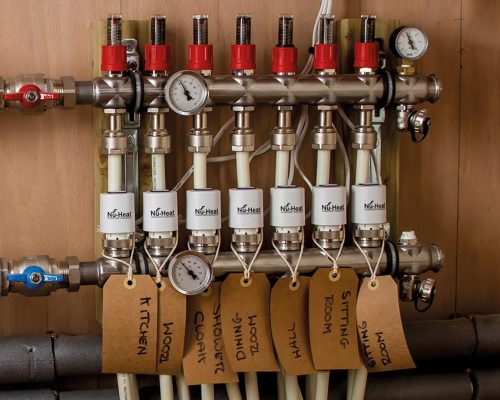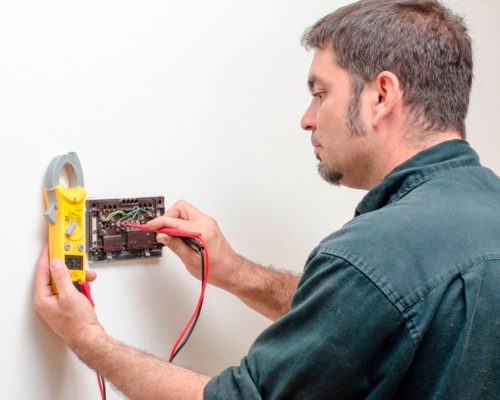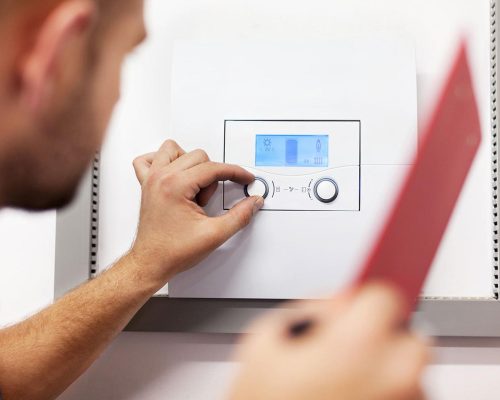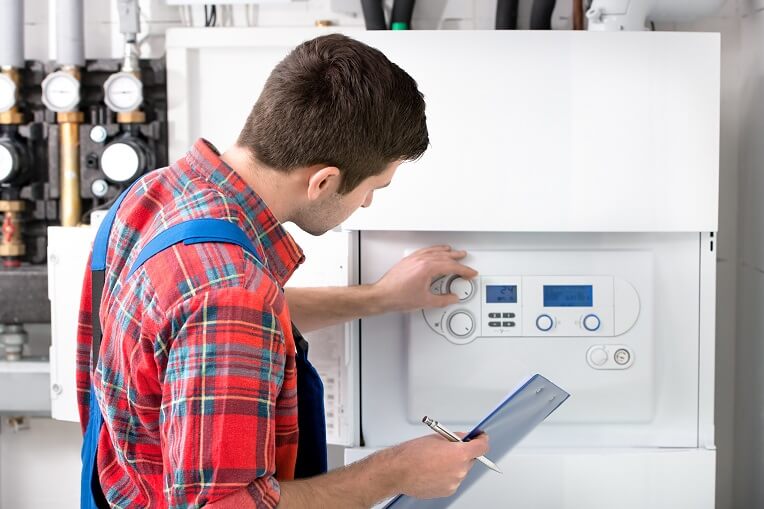If you are facing this issue, the matter should be further examined. Common heating system parts include a thermostat, programmer, timer, motorised valve, pump, and heating element, and one of these parts may be the source of the issue.
Boiler Continues Firing Up Automatically? Here Are Some Typical Issues and Their Resolutions
Pre-set Heating Conditions
Most boilers or their types include pre-set heating cycles that maintain warm, usable water. If we talk about combi boilers, they provide instant hot water whenever you might need them. Furthermore, most boilers have a timer where the temperature is automatically fixed.
How to Fix the Issue:
If this is happening too frequently, try these steps:
- Switch to a non-combi boiler
- Prevent your thermostat from resetting and dipping by setting it to a specific temperature.
- Avoid using too many hot water sources at the same time.
Cold Weather Fluctuation
If you have set your thermostat, this will keep your boiler running throughout the day. When the outside temperature drops below the predetermined setting, it will start to operate. Your boiler is in good working order as long as it runs when it needs to warm the water and house. This is highly unlikely if the air is circulating all the time.


How to Fix the Issue:
If your boiler keeps running automatically because of temperature issues, try these suggestions:
- Insulate the plumbing with the foam rolls.
- Keep your boiler on the frost cycle.
- Maintain a reliable and steady temperature.
Excessive Water Pressure Build-up
One of the main reasons for your boiler running without a pattern is higher water pressure. If the system is under high pressure, your boiler will operate excessively. The valves might be harmed as a result, and the thermostat might believe the water is cooler. Therefore, in an effort to heat the water, the boiler operates more frequently.
How to Fix the Issue:
- Ensure that all the diverter valves are open to prevent overflow. Diverter valves decide in which direction the water goes; if they are partially blocked, they will reduce the water flow and raise the pressure.
- Try adjusting the water pressure going to your house. Though every house has its own water pressure, most can be adjusted by twisting the knob.
- Check that the boiler’s water pump is not overly powerful. And if you are getting a new boiler, it should adhere to the manufacturer’s specifications.
Faulty Thermostat
A broken thermostat can randomly turn on your boiler. Even if the temperature is well above your desired temperature, a faulty thermostat might tell the boiler that the house is not warm enough. Though the boiler thermostat stops working if damaged, it’s rare but not impossible.
How to Fix the Issue:
- In such a situation, replace the thermostat or try to get new batteries.
Change the damaged thermostat by following this process:
- Disconnect the thermostat’s power source from the fuse box.
- Remove the broken thermostat.
- Tag all the wires according to their terminal letter and unplug them by pulling them off the base.
- Replace the old wires with the new thermostat’s wire base, then connect the old labelled wires to their new labelled terminals.
- Afterwards, attach the thermostat and turn on the power from the breaker box.


Frost Protection Cycles
In order to prevent the boiler’s pipework from freezing, frost cycles are created. The pipes can break if the frost builds up. Cracked pipes result in leaks, which means you’ll need to make a far more costly repair. Even though they can be a little annoying to hear every few hours, frost protection cycles are a great way to maintain the health and condition of your boiler.
How to Fix the Issue:
- You don’t have to worry if your boiler contains a frost protection cycle, then there is certainly nothing to worry about.
- The majority of boilers allow you to control and shut off the cycle, but you should leave it on while the outside temperature is below freezing.
- However, if the protection cycle turns on automatically when the temperature is normal, there is a possibility that the thermostat is broken and needs to be replaced.
Faulty Check Valves & Diverter Valves
A boiler contains several valves in the plumbing. In order to prevent water from running backwards, check the valves that are installed and fitted. Conversely, diverter valves allow the boiler to distribute warm water and air throughout the house. However, with time, these valves can be blocked. When this problem occurs, water flows and alerts the boiler that it requires to be heated. It will turn on and off randomly throughout the day because it believes it is always in use.
How to Fix the Issue:
- An electrical failure can damage a diverter valve.
- Make sure that the complete wiring connected to your boiler is working in good condition.
- Furthermore, if the valves are broken and stuck, turn off the main power going to the boiler.
- Use a saw to cut the PVC before and after the pipes.
- Next, Dry the bare PVC pipe on both ends, and then coat or apply PVC plumbing glue and replace the old valve.
- Let the glue solidify for at least 15 minutes

